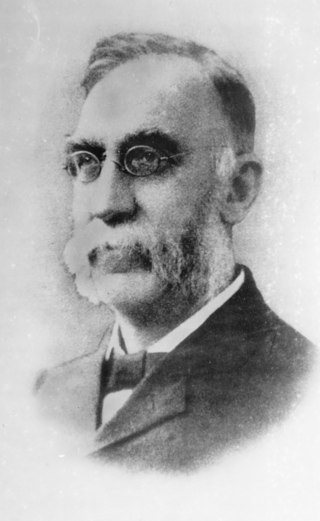
John Moffat was a Scottish-born entrepreneur who developed a mining and industrial empire around Loudoun Mill and Irvinebank in North Queensland which drove the development of north-eastern Australia. He was a devout Swedenborgian who was famous for both vision and enterprise. He was born in Newmilns, Ayrshire and spent most of his youth immersed in books. Extremely shy in temperament, he was known to hide whenever visitors approached. It was a habit he was to retain throughout his life.
Sundown Tin and Copper Mine is a heritage-listed mine at Little Sundown Creek, Stanthorpe, Southern Downs Region, Queensland, Australia. It was built from c. 1897 to 1920s. It was added to the Queensland Heritage Register on 28 July 2000.
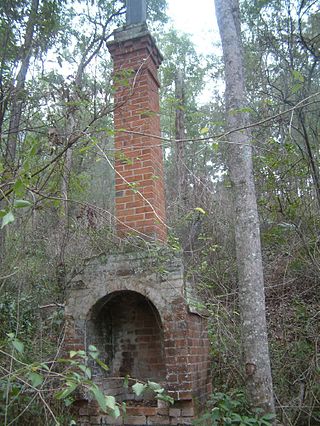
Glassford Creek Smelter Sites are the heritage-listed remains of a former smelter at Glassford State Forest, off Many Peaks Road, Many Peaks, Gladstone Region, Queensland, Australia. It was built c. 1903. It is also known as Glassford Creek Copper Smelters. It was added to the Queensland Heritage Register on 4 July 2006.

Alexandra Mine and Battery is a heritage-listed mine at Palmerville Station, Maytown, Shire of Cook, Queensland, Australia. It was built from c. 1878 to 1898. It is also known as Alexandra PC.It was added to the Queensland Heritage Register on 21 October 1992.
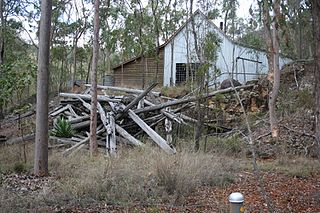
Great Northern Mine is a heritage-listed mine off Jacks Road, Herberton, Tablelands Region, Queensland, Australia. It was built from 1880 to 1940s. It was added to the Queensland Heritage Register on 21 October 1992.
Fischerton Water Race is a heritage-listed aqueduct at Tate-Almaden Road, Crystalbrook, Shire of Mareeba, Queensland, Australia. It was designed by George Bell and built in 1894. It was added to the Queensland Heritage Register on 21 November 2003.
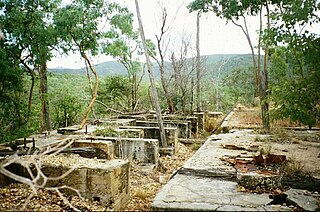
Thermo Electric Ore Reduction Corporation Mill is a heritage-listed ruins of a mining building at Wolfram Road, Wolfram, Dimbulah, Shire of Mareeba, Queensland, Australia. It was built from 1906 to 1918. It was added to the Queensland Heritage Register on 7 April 2004.

Rocky Bluff Battery and Township is a heritage-listed former mining town at Watsonville, Shire of Mareeba, Queensland, Australia. It was built from 1902 to c. 1926. It is also known as Stannary Hills Mill. It was added to the Queensland Heritage Register on 13 December 2002.

Loudoun House is a heritage-listed detached house at 16 O'Callaghan Street, Irvinebank, in the Shire of Mareeba in Queensland, Australia. It was built c. 1883–1884. It is also known as Moffat's House. It was added to the Queensland Heritage Register on 21 October 1992. It is now operated as the Loudoun House Museum by the Irvinebank School of Arts & Progress Association.

Irvinebank State Treatment Works is a heritage-listed refinery off Jessie Street, Irvinebank, Shire of Mareeba, Queensland, Australia. It was built from 1883 to c. 1908. It is also known as Loudoun Mill. It was added to the Queensland Heritage Register on 21 October 1992.
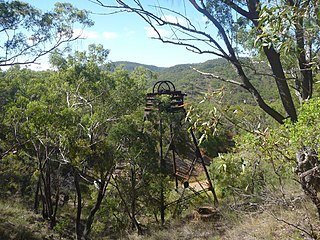
Vulcan Mine is a heritage-listed former mine at Mareeba Mining District, Irvinebank, Shire of Mareeba, Queensland, Australia. It was built from c. 1889 to 1930s. It was added to the Queensland Heritage Register on 21 October 1992.

Irvinebank School of Arts Hall is a heritage-listed school of arts at McDonald Street, Irvinebank, Shire of Mareeba, Queensland, Australia. It was built in 1900. It was added to the Queensland Heritage Register on 29 May 1995.

Stannary Hills Tramways are a heritage-listed pair of tramways at Irvinebank, Shire of Mareeba, Queensland, Australia. It was built from 1901 to 1907. It was added to the Queensland Heritage Register on 25 February 2005.

Kingsborough Battery is a heritage-listed mining building off the former East Street, Kingsborough, Thornborough, Shire of Mareeba, Queensland, Australia. It was built from c. 1896 to 1990s. It was added to the Queensland Heritage Register on 21 October 1992.

Mabel Mill is a heritage-listed former stamper battery at Barton Street, Ravenswood, Charters Towers Region, Queensland, Australia. It was built from c. 1871 to c. 1902. It is also known as Mabel Mill and Partridge Mill. It was added to the Queensland Heritage Register on 28 January 1994.
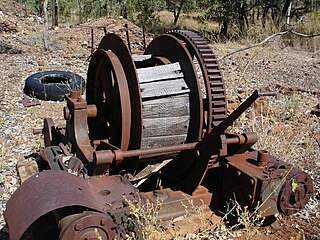
Ortona Mine and Battery is a heritage-listed mine at Forsayth-Agate Creek - Ortona (Iona) Station Road, Gilberton, Shire of Etheridge, Queensland, Australia. It was built from 1899 to 1908. It was added to the Queensland Heritage Register on 25 August 2000.

Richmond Mine and Battery is a heritage-listed mine at Gulf Developmental Road, Croydon, Shire of Croydon, Queensland, Australia. It operated from 1886 to c. 1916. It was added to the Queensland Heritage Register on 28 July 2006.

Silver Valley is a rural locality in the Tablelands Region, Queensland, Australia. In the 2016 census Silver Valley had a population of 144 people.

Irvinebank State School is a heritage-listed state school at High Street, Irvinebank, Shire of Mareeba, Queensland, Australia. It was designed by Robert and John Ferguson, Queensland Department of Public Works and built from 1889 to 1906 by Thomas Gordon and August Conrad Ferdinand Ohnesorgen. It was added to the Queensland Heritage Register on 1 May 2015.

Ravenswood Mining Landscape and Chinese Settlement Area is a heritage-listed former mining town and archaeological site on the reserve bounded by School Street, Cemetery Road, Railway Street and Burdekin Falls Dam Road, Ravenswood, Charters Towers Region, Queensland, Australia. It was added to the Queensland Heritage Register on 14 October 2016.




















